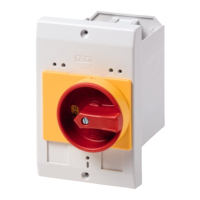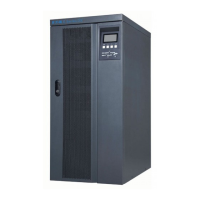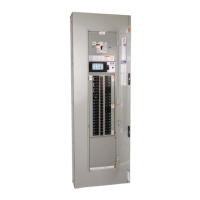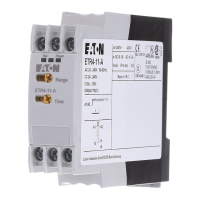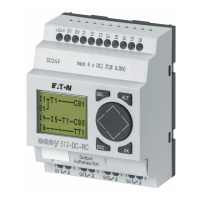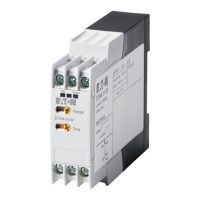◦ De-sensibilize current protection◦
• ANSI 51C: voltage controlled over current•
◦ Generator, motor, de-sensibilize current protection◦
Digital Inputs
It is not possible to assign a function to a Digital Input! Instead, it is the other way round: You
assign the status (signal) of a Digital Input to the input parameter of a particular module.
If, for instance, it is required to block the Prot[1] overcurrent protection module as soon as
there is a signal at the Digital Input “DI1” of the power supply card (terminal number 6 of
slot X1) then the following setting can be used:
[Protection Para / Global Prot Para / I-Prot / I[1]] »ExBlo1« = “DI Slot X1 . DI 1”
Binary Outputs
If binary outputs are congured with the setting »Latched« = “Active”, they will always keep
(return into) their position, even if there has been an interruption of the power supply.
This means that resetting a binary output that has latched a signal always requires
an explicit reset activity (see ╚═▷ “3.8 “Ack/Rst” key – Reset (Acknowledge) Latched
Signals, Relay Outputs, Trip Commands” and – for details – Chapter “Resets” in the
Technical Manual).
Load Reference Arrow System
• It is common practice to either use the “Load Reference Arrow System” for•
loads (consumed energy) and the “Generator Reference System” for generators
(generated energy).
• All E-Series protection devices (except generator protection relays) use exclusively•
the “Load Reference Arrow System”. Generator protection relays are working
based on the “Generator Reference System”.
•
This applies to directions and phase angles. The phase angle is dened as the angle
•
between the current phasor and the voltage phasor.
• Current and voltage arrows are to be counted positive in the direction of the arrow.•
Trip Commands
The protection device monitors the object to be protected, and if any serious fault should
occur, it is expected to issue a trip command.
Most protection functions feature a »Pickup«, a »Trip« and a »TripCmd«.
• A »Pickup« signal is issued by a protection function that detects a particular type•
of fault. If the protection function distinguishes between several fault types (e. g.
phase-specic faults) then a respective »Pickup« signal exists for each.
Every »Pickup« signal gets routed (internally) to the general protection
module »Prot«, which in turn issues a signal »Prot . Pickup«.
64 www.eaton.com E-Series Family Quick Start Guide
4 Good to Know for Commissioning

